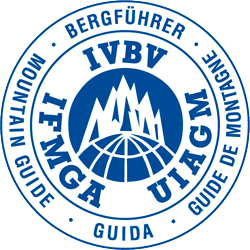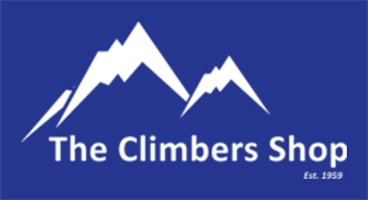Climbing on Gran Canaria by Pat Littlejohn
Each year many of us wonder where we can go in the depths of winter to climb in warm weather. Spain can be great of course, but last year (Jan/Feb 2010) it suffered several freezing-cold periods, as did the eastern Mediterranean.
Places like Joshua Tree, Mexico and South Africa are safe bets but they take a lot more time and cash.
So it can be worth heading to the most southerly outpost of Spain - the Canary Islands - and that’s where Steve Sustad and I took a quick trip in 2010. Geographically part of Africa but politically part of Spain, the islands hold many attractions for a winter visit, including cheap flights, a balmy climate with temperatures hovering around 20-25 degrees, and loads of cheap accommodation since the economic ‘downturn’. So why aren’t they more popular with British climbers? Well, the sport climbing, though good and plentiful, doesn’t quite match southern Spain for quality, however having sampled the sport climbing on Tenerife and Gran Canaria I can confirm that the latter is far better, with many more cliffs and climbs. And Gran Canaria has something else which is surprising – very impressive and adventurous traditional climbing!
Though blighted with the usual tourist developments on its southern shore, most of the land area of Gran Canaria is a beautiful and mountainous National Park, rising to nearly 2000m in the centre where the volcanic cores of several mountains give rock scenery which is a cross between the Dolomites and the canyons of Arizona. There has been traditional mountaineering in this area since the 1930’s but never a guidebook as far as I know, with information being kept with the local climbing club (Federación Gran Canaria de Montañismo, http://www.fgcm.org/ ) and more recently stored on the internet at: http://topatras.eresmas.com/Escalada.htm [It’s in Spanish so use Google Translate to get the gist of it - and have a really good laugh at the robotic English.]
Sport climbing exists all over the island, but for trad climbing the central group of rocky peaks around the village of Ayacata is a bit of a mecca, and has a rather interesting history. In the early days routes were established by traditional Alpinists using pitons for protection and aid. We couldn’t find any information about these but stumbled across them whilst doing our own explorations. We’d be climbing a line thinking it might be a first ascent, then right near the top after several challenging pitches we’d be humbled by discovering a rusted piton (more often than not an old Charlet Moser offset, one of the worst-designed pitons of all time). These climbers were obviously pretty bold and skilled at climbing on all forms of basalt.
In the early 80’s, when bolts were going in by the thousand in the crags of the south of France and the Costa Blanca, climbers in Gran Canaria were making hard trad ascents which can only be compared with adventurous climbs at South Stack (Gogarth) or the sea cliffs of the South West. Topos for these can be found in the central café/bar in Ayacata and they make impressive reading. The routes are big, up to 8 or 9 pitches, and have hard, naturally protected free pitches (up to Fr 7a) as well as occasional aid sections up to A3+ (probably desperate). On many of the topo-diagrams the first ascensionists make a point of stressing that their routes were climbed without bolts and without hammers, so among some teams there was a strong ‘clean climbing’ ethic. This ethic may or may not be still alive and well on the island (we did hear that some older routes had now been equipped with bolts) but it was refreshing to find an area that had not yet succumbed to all-out bolting. It’s my guess that many of these routes await second ascents and that they would give fantastic sport to people who would enjoy an enhanced ‘Gogarth experience’ in the middle of winter in a warm climate. I know I’ll be back for more trad climbing there. It seems that equipping routes for sport climbing began on the Roque Nublo, a superb monolith of hard, weathered basalt perched at almost 2000m on the highest plateau of the island. There about a dozen bolted climbs here now, all good quality, as well many others on rock formations in the vicinity.
On this trip the main objective for Steve and I was a big mountain escarpment he’d spotted just before my arrival. This was the south face of a peak called Montaña de Ojeda, where it forms a massive tiered cliff called Los Quemados. We had no idea whether anything had been climbed here, so we just went up with all the gear and took a look. With bolting gear many things would have been possible, and that may be the ultimate destiny of the cliff, but for us the challenge was finding a way that would go in our preferred style, i.e. no bolts, pegs or hammers, just a good old British trad rack of nuts and Friends.
Steve kicked off up the first VS pitch, a little snaking groove which gained the base of the very big and impressive main tier. For me it was straight in at the deep end - I was in recovery from a knee op and hadn’t done any rock climbing for 4 months, so I wasn’t prepared for the 20m of sustained bridging which started the next pitch. This turned out to be the crux of the route at about E3 5c, or UIAA grade VI+. We had to break right to reach some more grooves, which gave really good climbing on perfect rock for 2 further pitches, but after this we realised we were in no shape to continue - we had made too late a start on a baking hot day, and we had not brought enough water.
Next day an ‘alpine wake-up’ saw us approaching the crag at dawn, with 6 litres of water between us. Above our high point the line linked a series of scoops and caves before landing us below another steep and imposing tier. By now the sun was beating down again and the crag felt truly African. We had hit some unusually hot days. As I led another technical groove with some memorable finger-tip layback moves, Steve roasted on the belay and warned that he was overheating again. Luckily his pitch took him into a chimney and he was able to stuff his head into some shade for several minutes. My next pitch was a thin crack which turned out to be nasty and crumbling till I realised I could swing right to reach a big wind-eroded scoop which had been invisible from below. Now the way was clear to the top of the tier, above which loomed the final 50m wall.
There was a possible line straight ahead but after 15m it was blocked by a rotten overhang, and to press on into XS territory at this point would have ruined a potentially fine route. Luckily, a groove 20m to the right turned out to have better rock and better gear than had been apparent from below. It led past an overhang to an amazing ‘bell’ of rock formed where wind erosion had hollowed out material behind the hard outer layer of basalt. By striking it with a karabiner you could play different notes in different places! I took cover in a cave stance while Steve dealt with the final pitch and soon we were on the great shelf where the cliff terminates, enjoying a breeze and views of the peak and the island’s interior. The result of our efforts was El Cardonal, a 13-pitch route which was sustained but nowhere too hard, definitely a worthy objective for people wanting to experience a long, adventurous trad climb on Gran Canaria.
Note: the Gran Canaria National Park also has a well developed network of footpaths and is a superb walking venue for the winter months.
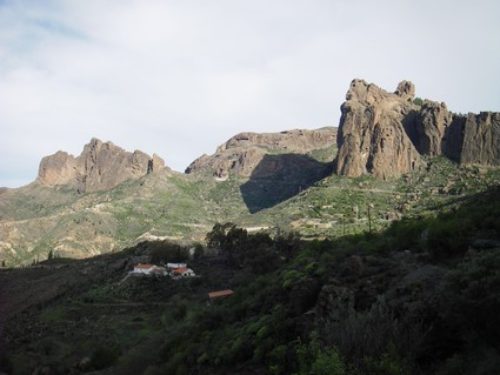
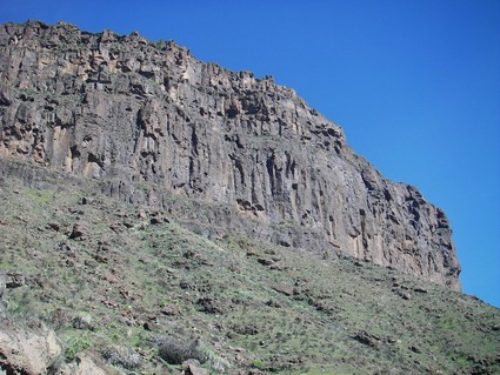
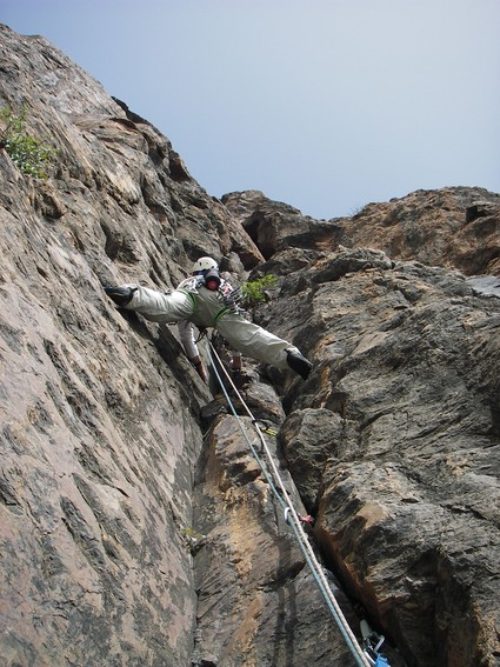
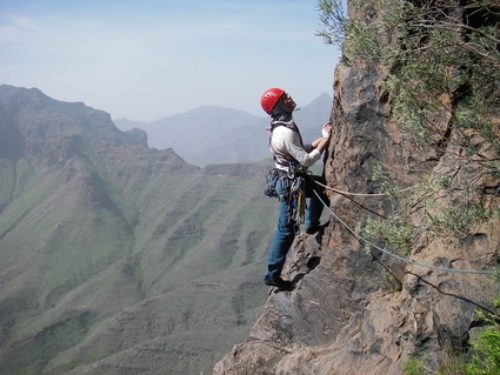
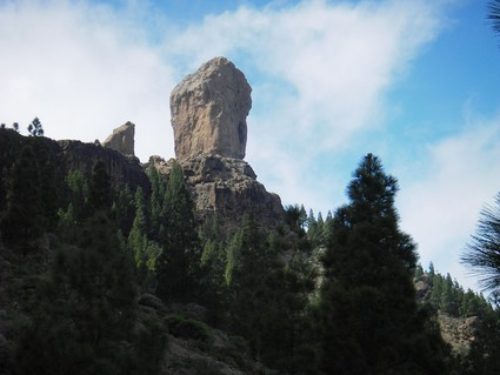
Related News Articles

ISM Virgin Peaks Expedition 2024 - Tien Shan Kyrgyzstan
ISM trip report of our trip into a very remote part of the Tien Shan Mountains, Kyrgyzstan
Read Article
Getting Into & Developing Your Climbing
Indoor bouldering is a great place to start if you want to try climbing for the first time. You can…
Read Article
ISM Virgin Peaks Expedition 2023 – Tien Shan Kyrgyzstan
ISM trip report of our trip into a very remote part of the Tien Shan Mountains, Kyrgyzstan.
Read Article
Kyrgyzstan Faces 2022
This year ISM celebrated 25yrs of expedition climbing in Kyrgyzstan, with a fantastic trip to the Fergana Range in the…
Read Article
